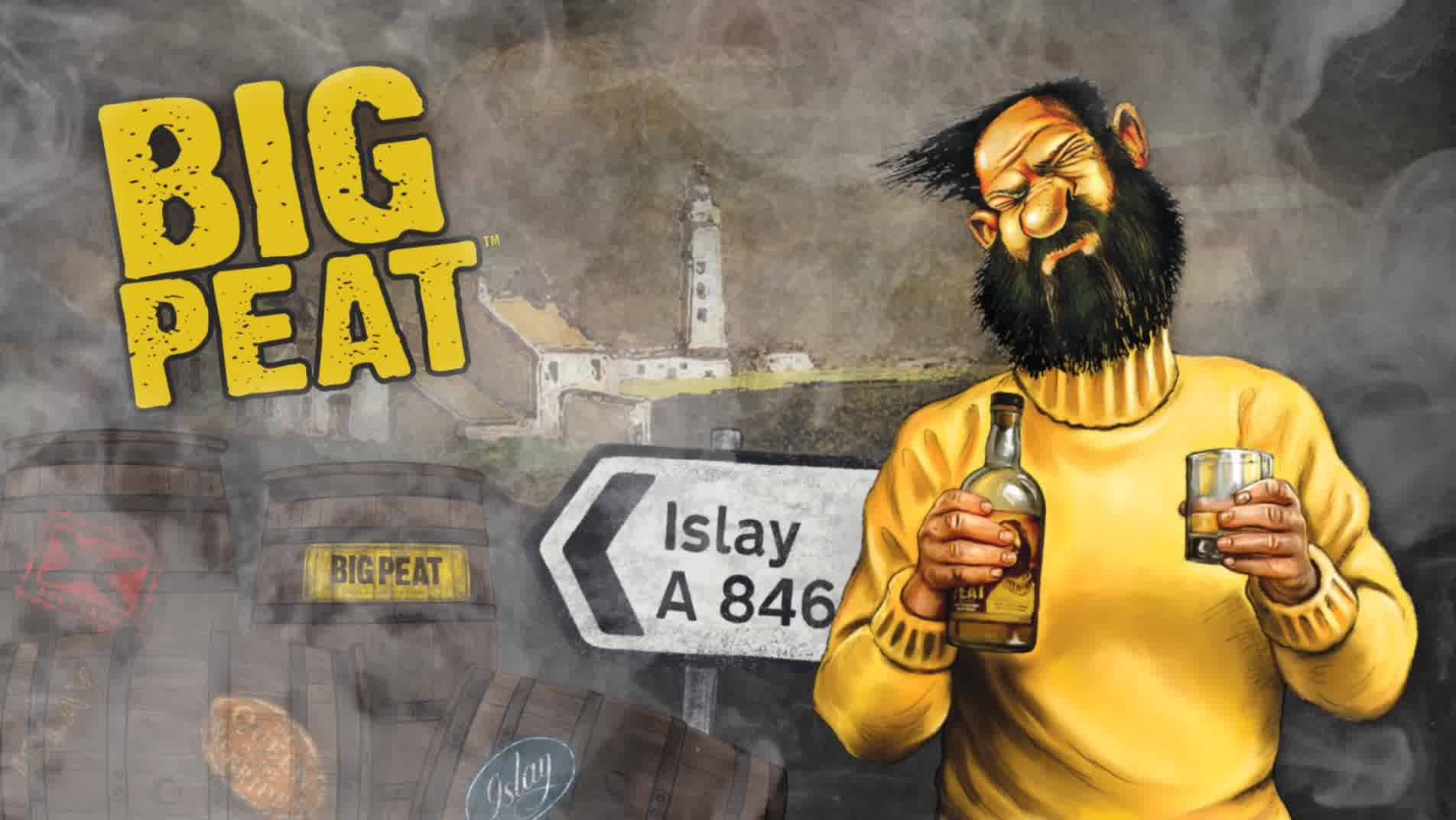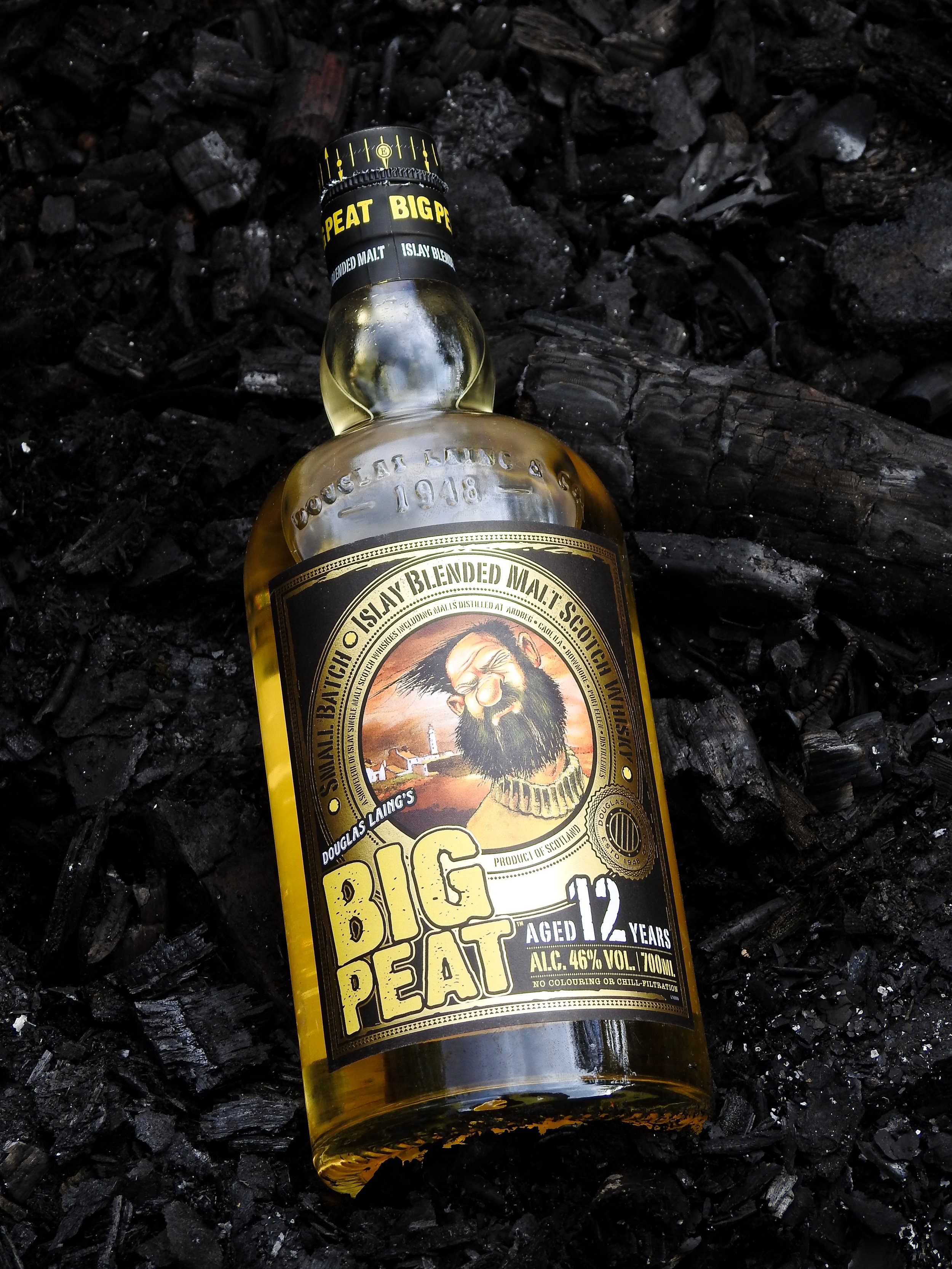Opinion + Review // Big Peat 12 year old, or why you should give blended malts a chance
It’s been a while since I wrote an article on the blog, and I’ve been itching to start things up again. So here’s a two-parter article, one part opinion piece, another a review of Big Peat 12 year old. And I think I’ve managed to blend those two parts together. Heh. Pun.
Text by Mickaël Van Nieuwenhove
Photography is © Mickaël Van Nieuwenhove and © Douglas Laing
© Douglas Laing
Why am I writing this article? Firstly because I was sent a lovely gift package by Cinoco Spirits and Douglas Laing, containing a bottle of Big Peat 12 y/o, a peaty scented candle, and a box of matches. Cue the fun times. Secondly, because more than once, I’ve had a conversation with people about why blended whiskies should not be left on the shelf. And Big Peat 12 y/o is a blended whisky, so, yeah. Let me clarify.
Whenever I have an extended talk with owners of spirits shops, I tend to hear that it’s difficult ‘persuading’ the ‘older generation’ of whisky consumers (‘classicists’, ‘traditionalists’?) to try a blended (scotch) whisky. For some reason or the other, there’s still a significant amount of whisky aficionados who swear by single malts and age statements, though the latter is an entirely different discussion. And I wonder: why?
Is this the result of a by-gone way of marketing whisky? Single malts used to be incredibly popular, and the demand for them grew exponentially. Single malts were in demand, and every distillery wanted to produce them. The public followed, to the point that ‘only single malts’ was an underlying rule in a lot of whisky consumers’ collection. But why? Why is a single malt whisky ‘better’ than a blended malt? I’d argue: it isn’t.
Speaking purely from the perspective of the characteristics of single malts and blended malts, you could say the following: a single malt whisky is a whisky made from only one malt. It is unblended with other malts. But that doesn’t mean it’s entirely unblended. A single malt whisky doesn’t come from one single cask, that would make it a single cask whisky. That means that single malt whiskies are blended whiskies, just not blended with other malts. One malt, one distillery, multiple casks.
Blended malt whiskies, on the other hand, are whiskies that have been produced by using a combination of different malt and grain distilleries. Multiple malts, multiple distilleries, multiple casks. But is this objectively worse than single malts? Again, I’d argue: no.
Because regardless of whether one or multiple malts are used, coming from one or multiple distilleries, the only way to truly rate a whisky, at least to me, is whether you like it or not. Whisky is a product to be consumed rather than to keep in a vault that is temperature-controlled. And because of that, the first thing you should do before you make up your mind about whether a bottle is respectively ‘good’ or ‘bad’, is taste it.
That brings me back to those people who swear by single malts. I’m addressing them directly now: hey, could you tell me why? I respect that you want to limit yourself a bit, because it has become virtually impossible to keep own of every expression that is being released by a single distillery alone. So why do you swear by single malts? Have you tried blended malts? If yes, why did you decide that they are not for you? I’m eager to open up this conversation a bit, because I’m certain I can learn from you. So reach out on social media or send me an email through the contact form on the website. Thanks in advance!
© Mickaël Van Nieuwenhove
And all of the previous leads me to that bottle of Big Peat 12 Years Old. This expression, produced and bottled by Douglas Laing, is a blend of 4 Islay whiskies: Caol Ila, Bowmore, Ardbeg, and Port Ellen. Additionally, this blend also has an age statement attached to it: all of the whiskies that were used to make this blend are at least 12 years old. The argument that blended whiskies come from inferior distilleries, clearly does not survive this little line-up of ‘ingredients’.
You might be wondering why you would want to try a blended whisky that clearly informs you which whiskies were used. Couldn’t you just make your own blend with 4 bottles, on from each distillery? Well, no. I mean, you could try, but chances are very slim you’ll actually succeed in recreating the blend you’ve got in the bottle of Big Peat 12.
That’s because, for starters, the ratio probably isn’t 1:1:1:1 (4 equal parts of the 4 whiskies). Blending is a real art, and it takes up a lot of time to figure out what the best ‘recipe’ is for a blended whisky. Additionally, don’t forget that every cask of whisky is unique. Take 2 casks of whisky made in identical circumstances, using the same techniques, and the same ingredients, and you’ll still end up with two different whiskies, though the difference might be very small. That’s because wood is something natural, something that is continuously changing.
Now, my palate is not advanced or trained enough to start breaking up the various influences of Port Ellen, Ardbeg, Bowmore, and Caol Ila - I’ll leave that to the experts – so instead I’ll just write down why I like this expression.
© Mickaël Van Nieuwenhove
This expression starts by offering a blend of sweet, sour, and iodine scents. The maritime notes that are common in Islay whiskies. Balance-wise, I’d say overall sweet and smoky, with a sharper, but subtle sour undertone. Promising.
Next, I picked up on some complementary flavors. The smokiness is definitely further explored on the palate: charcoal, smoke, and general campfire vibes. There’s also a bit of freshness there as well, a little bit of summer rain.
Lastly, the finish is of medium-length, and leaves a pleasant dry note, mixed with a sweeter tone. I wouldn’t suggest downing a dram of this. Instead, take your time and let the liquid ‘build on itself’. With this, I mean that a lot of whiskies basically get richer in flavor the longer the dram ‘opens up’ in the glass and the longer your palate has time to ‘get used’ to the whisky.
Retail puts this bottle at about 55 pounds, which, at the moment, is about 65 euros, or 65 dollars. Don’t forget that prices might be different based on your location and definitely the tax laws regarding alcohol in your country. But is it worth it at that price? Well, there are certainly cheaper blended whiskies out there, but they are not Big Peat. If you want to have a lovely blend made from 4 powerhouses of Islay, then this is a blend you certainly have to try out.
© Douglas Laing




